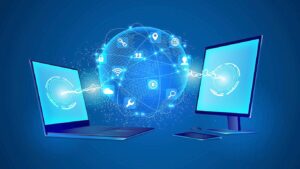Introduction
In recent years, the healthcare industry has undergone a significant transformation fueled by advancements in technology. Information Technology (IT) services play a crucial role in revolutionizing healthcare delivery, improving patient outcomes, and enhancing operational efficiency. From electronic health records (EHR) systems to telemedicine platforms and healthcare analytics, IT services are reshaping the way healthcare providers deliver care and manage operations.
The Importance of IT Services in Healthcare
IT services in healthcare encompass a wide range of solutions designed to streamline processes, improve communication, and enhance patient care. These services enable healthcare organizations to:
- Digitize Health Records: Transitioning from paper-based records to electronic health records (EHR) systems enables healthcare providers to access patient information securely, share data across care settings, and make more informed clinical decisions.
- Enable Telemedicine and Remote Monitoring: Telemedicine platforms and remote monitoring technologies allow patients to consult with healthcare providers remotely, access specialist care, and monitor chronic conditions from the comfort of their homes.
- Enhance Clinical Decision Support: IT solutions provide clinicians with access to evidence-based guidelines, clinical protocols, and decision support tools that aid in diagnosis, treatment planning, and medication management.
- Improve Patient Engagement: Patient portals, mobile apps, and wearable devices empower patients to take an active role in managing their health, scheduling appointments, accessing test results, and communicating with their care team.
- Optimize Healthcare Operations: IT services automate administrative tasks, streamline workflows, and optimize resource allocation, reducing inefficiencies and costs while improving staff productivity and patient satisfaction.
Key IT Services for Healthcare
- Electronic Health Records (EHR): EHR systems digitize patient health information, including medical history, diagnoses, medications, and treatment plans, providing a comprehensive view of patient care across the care continuum.
- Telemedicine and Remote Monitoring: Telemedicine platforms enable virtual consultations, remote diagnosis, and treatment delivery, while remote monitoring solutions track patients’ vital signs, symptoms, and adherence to treatment plans in real-time.
- Health Information Exchange (HIE): HIE platforms facilitate the secure exchange of patient health information between healthcare providers, enabling seamless care coordination, collaboration, and interoperability.
- Clinical Decision Support Systems (CDSS): CDSS leverage clinical knowledge, patient data, and evidence-based guidelines to provide clinicians with real-time decision support, alerts, and recommendations at the point of care.
- Healthcare Analytics and Business Intelligence: Analytics solutions analyze large volumes of healthcare data to identify trends, patterns, and insights that drive clinical and operational improvements, population health management, and cost containment initiatives.
Challenges and Considerations
While IT services offer numerous benefits to healthcare organizations, they also present several challenges and considerations:
- Data Security and Privacy: Protecting patient health information from unauthorized access, data breaches, and cyber threats is paramount, requiring robust security measures, encryption protocols, and compliance with regulatory requirements such as the Health Insurance Portability and Accountability Act (HIPAA).
- Interoperability and Integration: Ensuring seamless interoperability and integration between disparate IT systems, applications, and devices is essential for exchanging data, coordinating care, and delivering a seamless patient experience.
- User Adoption and Training: Engaging clinicians, staff, and patients in the adoption and use of IT solutions requires comprehensive training, education, and ongoing support to overcome resistance to change and maximize the benefits of technology.
- Regulatory Compliance and Standards: Navigating complex regulatory requirements, standards, and certifications governing healthcare IT, such as Meaningful Use, ICD-10, and HL7, requires ongoing monitoring, compliance initiatives, and adherence to industry best practices.
- Ethical and Legal Considerations: Addressing ethical and legal issues related to patient consent, data ownership, liability, and informed consent in the context of IT services requires careful consideration and adherence to ethical guidelines and legal frameworks.
Future Trends in Healthcare IT
The future of healthcare IT is marked by several emerging trends and innovations that are poised to shape the industry:
- Artificial Intelligence and Machine Learning: AI and machine learning technologies are revolutionizing healthcare by enabling predictive analytics, personalized medicine, and clinical decision support, unlocking new insights and opportunities for improving patient outcomes and operational efficiency.
- Internet of Medical Things (IoMT): The IoMT ecosystem encompasses connected medical devices, wearables, and sensors that collect and transmit real-time patient data, enabling remote monitoring, proactive interventions, and continuous health monitoring.
- Blockchain Technology: Blockchain technology offers a secure and transparent platform for storing, sharing, and validating healthcare data, facilitating data interoperability, patient consent management, and secure transactions across the healthcare ecosystem.
- Virtual Reality (VR) and Augmented Reality (AR): VR and AR technologies are transforming medical education, training, and simulation, enabling immersive learning experiences, surgical planning, and patient education.
- Precision Medicine and Genomics: Advances in genomics, molecular biology, and precision medicine are driving the development of personalized therapies, targeted treatments, and predictive diagnostics tailored to individual patient profiles and genetic makeup.

Conclusion
In conclusion, IT services are reshaping the healthcare landscape, driving innovation, improving patient outcomes, and enhancing operational efficiency. By embracing emerging technologies, addressing key challenges, and leveraging best practices, healthcare organizations can harness the power of IT to deliver high-quality, patient-centered care and thrive in an increasingly digital and interconnected world.